-
Friday, 8 October 2021 Nouvel Building, Auditorium 400
Session 1
Tickets10:30am – 11:30am Mists that Are Molluscs, that Are Landscapes, that Are Theatres
Encounter with María JerezIn her work María Jerez explores the agency of things, materials, language, spaces, and other allies, human and non-human, that participate in her pieces, generating a map where the hierarchies of bodies change into a species of critical animism which sets forth an encounter with that which escapes anthropocentric logics. In the words of the artist: “I have always thought that every time you re-read a text it has changed. As a child, I would even open books very quickly to see if I could surprise the letters and catch the words moving; I suspected that that is what they did when the book was closed. I think it is Foucault who said that language is not a tool to observe and describe nature, but rather language is nature in and of itself. Mutating, ecosystemic, living”.
11:30am - 12:30pm Synergies and Algorithmic Connections Between Body, Sound and Light
Encounter with Pablo PalacioThis presentation centres on the analysis of some of the common principles between the art of dance, music and the visual arts, looking for feedback between these disciplines by employing digital interactive systems and generative algorithms. In practically analysing how this study can contribute to musical choreographic composition and the real-time generation and manipulation of light and image, the aim is to reflect on the validity of these instruments as a tool to construct multi-modal interactive environments in a stage context, and how the development of this technology can be a medium for amplifying corporeal awareness and the limits of our own physicality.
1pm- 2:30pm Film Session
Heiner Goebbels, Stifters Dinge [Stifter’s Things]
Switzerland, 2007, colour, original version in English and French with Spanish subtitles, 70’. Video by Marc PerroudDrawing from writer Adalbert Stifter and his work Granite (Verlag von Gustav Heckenast, 1853), where he almost obsessively describes the Alpine landscape, Heiner Goebbels takes on the role of an architect of stage space, where a world of forms, weaves and colours reacquire life, agency and movement, far from the static and cold imprint of landscape painting. Goebbels builds an animated and activity-packed visual and sound landscape, giving voice and body to names such as Bach, Lévi-Strauss, the indigenous peoples from Colombia Goebbels recorded on a trip to South America in 1985, and Malcolm X, among others. It constitutes a high-tech tableau which engages in dialogue and enters into tension with the primary energies of the natural world.
-
Friday, 8 October 2021 Nouvel Building, Auditorium 400
Session 2
Tickets5pm - 5:30pm Presentation of the Expanded Theatricalities Chair
Participants: Diana Delgado Ureña, Fernando Quesada, Isabel de Naverán, Victoria Pérez Royo, and José A. Sánchez5:30pm – 6:45pm Aesthetics of Absence
Lecture by Heiner Goebbels
English, with simultaneous interpreting into SpanishThis master lecture sees Heiner Goebbels analyse the aesthetic strategies in performance and music practices which are increasingly empty at the centre. Instead of the basic assumptions of the theatre of “presence and intensity”, Goebbels reflects on an alternative notion of drama, one which moves beyond figures on stage to a drama of elements, a drama of the spectator’s perception. Interweaving a complex network of sound, music, literature, sociology and fine arts, and in collaboration with artists such as Romeo Castellucci, William Forsythe, Douglas Gordon, Ryoji Ikeda, Michal Rovner, Gregor Schneider, and numerous others, Goebbels produces works that, with other individual pieces, are shown in this lecture in the form of sound and video extracts.
6:45pm - 7:45pm Conversation with Heiner Goebbels
Participants: María Jerez and Pablo Palacio
Moderated by: Fernando Quesada -
Saturday, 9 October 2021 Nouvel Building, Auditorium 200
Session 3
Tickets5pm Film Session and Talk
María Jerez and Silvia Zayas. The Boogie-Woogie Ghost
Spain, 2018, colour, original version in Spanish, 34’’The Boogie-Woogie Ghost is a circular film shot inside a village house. The image is constantly modified through the movement of bodies that remain invisible to the camera, acting as ghosts. The objects in the house switch places, tremble or fall for no apparent reason, which imbues them with agency. Time and again the space mutates, as if non-human forces insist on relentlessly destabilising and activating it. The tension between the visible and the invisible create the appearance of the event, while the montage of images works inside the logic of the invisible when these images are captured, turning them into dance or a dance montage — a dance of ghosts.
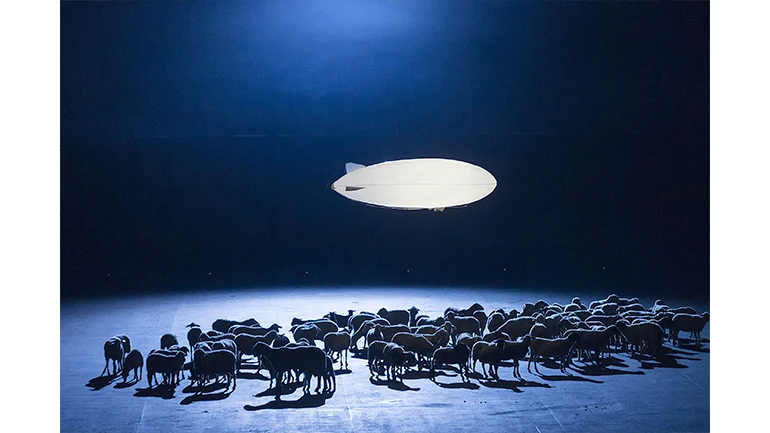
Held on 08 oct 2021
In this inaugural edition of the Expanded Theatricalities Chair, the work and ideas of composer and director Heiner Goebbels (Germany, 1952) engage in dialogue with the proposals of artists María Jerez, Pablo Palacio and Silvia Zayas, continuing the debate on expanded theatricalities in these times of Anthropocene crisis — one that can also be considered a crisis of the insurgence of matter, following the ideas of Suely Rolnik.
Heiner Goebbels is one of the foremost creators in the contemporary artistic landscape, with productions and writings that draw influences from the “agency of matter”, a concept referring to matter as an agent of action. Over the past 30 years, Goebbels has challenged limits and deconstructed conventional aesthetic strategies, contributing with major innovations in the scenery of stage and performing arts. In his work Ästhetik der Abwesenheit. Texte zum Theater (Aesthetics of Absence. Texts on Theatre, 2012), which brings together his texts on theatre in their entirety and his music works, he puts forward the idea of theatre as a “thing in itself”, theatre in which a “drama of the senses” or a “drama of the mediums” is developed. The idea has given rise to productions like Stifters Dinge (Stifter’s Things, 2007) in which Goebbels, inspired by the intense perception of landscape in Adalbert Stifter’s novel Granite, creates a stage experiment without actors, whereby theatre mechanisms and stage elements take centre stage; or When the Mountain Changed its Clothing, a work inspired by the popular Resian song Da Da Pa Ćanynu, which reflects the seasonal changes in the Kanin mountains (Slovenia). In his compilatory work, Goebbels writes: “making people who act go backwards and thus excavating anthropocentric automatisms, [Stifter] forces us, through the description of natural catastrophes, for example, to let ourselves be stunned by the forces that escape our sphere of influence”.
Curated by the research-creation group ARTEA, the Chair analyses the thought that inhabits stage and performance practices and invites dialogues which occur between artistic practices and modes of social theatricality to be heard and fostered. The aim is to punctuate the political potency of theatre, choreography and action art, taking into consideration that which is inherent in all of them: the modes of collaborative production and simultaneous presence of bodies, differentiated and individualised, turned into places that posit discourse, the manifestation of dissidence and the emergence of desire as a driving force of life.
This edition of the Chair is linked to the research project The New Loss of Centre. Critical Practices of Live Arts and Architecture in the Anthropocene, developed by ARTEA since June 2020. The project focuses on the study of theatricalities inside the framework of environmental humanities, an interdisciplinary field of research which looks to bridge the gap between science and humanities, under the assumption that the human side is just one more agent among others that shape the environment. The first public activity linked to this research project was previously the study group Body, Territory and Conflict (Museo Reina Sofía, 2020–2021), coordinated by Fernando Quesada, a member of the ARTEA collective.
Participantes
[dropdown]
Diana Delgado Ureña is a stage arts researcher and independent cultural agent. Since 2013, she has worked as the academic and artistic director of the MA in Arts Practice and Visual Culture (University of Castilla la Mancha and Museo Reina Sofía). Her most recent work most notably includes being the curator, with artist Jaime Vallaure, of the Dame Cuartelillo series of performances in the Conde Duque Cultural Centre in Madrid (2019) and the publication, with artist Vicente Arlandis, editor Gabriela Halac and researcher Miguel Martínez, of El libro agotado (DocumentA/Escénicas, 2019), a stage laboratory on bibliodiversity.
Heiner Goebbels is a composer and director whose productions span musical theatre pieces, stage concerts and orchestral compositions, among other disciplines. He has participated in major music, theatre and art festivals around the world and exhibited his work in institutions such as Centre Pompidou in Paris, the Art Museum from the National University of Bogotá, and Musée d’art contemporain, Lyon. Furthermore, he has lectured at the Institute of Theatre Studies from the Justus Liebig University, Giessen (Germany) and is currently the first holder of the Georg Büchner Chair. Goebbels has been honoured with numerous international awards, including the Prix Italia, European Theatre Prize, and the International Ibsen Award.
María Jerez is an artist whose work is situated between choreography, cinema and the visual arts. In her recent work, she questions theatre and film conventions and the viewer’s implicit understanding in them, opening potential spaces through encounters with that which the spectator finds strange and alien, and establishing indistinct edges between what is known and unknown, between object and subject, the animate and the inanimate. Her work, therefore, seeks to escape logocentric and anthropocentric logics, where human knowledge becomes something vulnerable before other enigmatic and complex ecosystems.
Isabel de Naverán holds a PhD in Fine Arts from the University of the Basque Country and is an independent researcher. She is part of the research group ARTEA, with her studies exploring the crossroads between art, contemporary choreography and performance in curatorial, publishing and writing projects. In 2010, she founded, with Beatriz Cavia, Miren Jaio and Leire Vergara, the project Bulegoa z/b — Office for Art and Knowledge, with which she was affiliated until 2018. She is currently a live arts adviser in the Museo Reina Sofía’s Public Activities Department and an associate researcher at the Azkuna Zentroa Society and Contemporary Culture Centre in Bilbao.
Pablo Palacio in an electroacoustic and instrumental composer whose work centres on the development of algorithmic approaches in composition and new technology in the sphere of interactive music. Alongside Muriel Romero, he is the director and founder of Instituto Stocos, a project which explores the interaction between music, body movement and visual imagery, and made up of abstractions taken from other disciplines such as artificial intelligence, biology, mathematics and experimental psychology in a stage context.
Victoria Pérez Royo is a professor of Aesthetics and Art Theory at the University of Zaragoza and an ARTEA researcher. She has co-directed the MA in Arts Practice and Visual Culture (University of Castilla la Mancha and Museo Reina Sofía) and taught seminars in university art programmes in countries such as Argentina, Germany, Costa Rica, Belgium, the Netherlands and Mexico, among others. Moreover, she has published books that include Danza contemporánea, espacio público y arquitectura (2008) and Componer el plural. Cuerpo, escena, política (2016, with Diego Agulló). In recent years, she has worked as a curator and on research initiatives in institutions like La Casa Encendida, Museo Reina Sofía and Matadero Madrid.
Fernando Quesada is an architect and head lecturer in Architectural Projects at the University of Alcalá de Henares. He has also been part of the research-creation group ARTEA since its inception. His work focuses on two major fields: the theory and history of modern and contemporary architecture, and its relationship with stage arts and performance, and the main lines of work in this critical framework are the body, biopolitics, spatiality and social theatricality. Furthermore, his most recent publications include Tecnopastoralismo. Ensayos y proyectos en torno a la Arcadia tecnificada (Ediciones Asimétricas, 2020) and Mobile Theater. Architectural Counterculture on Stage (Actar Publishers, 2021).
José Antonio Sánchez is a lecturer at the Cuenca Faculty of Fine Arts and founder of the ARTEA research group and the MA in Arts Practice and Visual Culture (University of Castilla la Mancha and Museo Reina Sofía). Among his publications are La escena moderna (1999), Prácticas de lo real (2007) and Cuerpos ajenos (2017), and his recent work most notably includes directing the stage version of Argentinean artist León Ferrari’s Cuerpos ajenos (The Bodies of Others, 2017), in collaboration with Juan Ernesto Díaz and Ruth Estévez (2017–2018), and, with Esther Belvis, the publication of a monographic issue of the magazine Performance Research, “On Disappearance” (2019).
Silvia Zayas is an artist who works at the limits of live arts, film and expanded choreography. She searches for hybrid forms of research and artistic production, visible in her project Jumping Scales (Matadero Madrid, 2018). Her works most notably include Talking pictures (2018), with Esperanza Collado, and, in 2021, the films Brilliant Corners, with the Orquestina de Pigmeos collective, Puebla, with María Jerez, and the stage piece U.
[/dropdown]
Educational program developed with the sponsorship of

Más actividades

Oliver Laxe. HU/هُوَ. Dance as if no one were watching you
Tuesday, 16 December 2025 – 7pm
As a preamble to the opening of the exhibition HU/هُوَ. Dance as if no one were watching you, film-maker Oliver Laxe (Paris, 1982) engages in conversation with the show’s curators, Julia Morandeira and Chema González, touching on the working processes and visual references that articulate this site-specific project for the Museo Reina Sofía. The installation unveils a new programme in Space 1, devoted from this point on to projects by artists and film-makers who conduct investigations into the moving image, sound and other mediums in their exhibition forms.
Oliver Laxe’s film-making is situated in a resilient, cross-border territory, where the material and the political live side by side. In HU/هُوَ. Dance as if no one were watching you, this drift is sculpted into a search for the transcendency that arises between dancing bodies, sacred architectures and landscapes subjected to elemental and cosmological forces. As a result, this conversation seeks to explore the relationship the piece bears to the imagery of ancient monotheisms, the resonance of Persian Sufi literature and the role of abstraction as a resistance to literal meaning, as well as looking to analyse the possibilities of the image and the role of music — made here in collaboration with musician David Letellier, who also works under the pseudonym Kangding Ray — in this project.
These inaugural conversations, part of the main working strands of the Museo’s Public Programmes Area, aim to explore in greater depth the exhibition narratives of the shows organised by the Museo from the perspective of artists, curators and specialists.
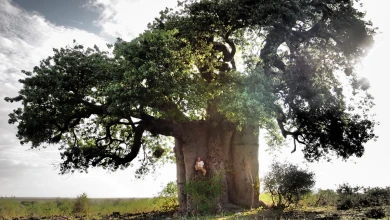
Francisco López and Barbara Ellison
Thursday, 11 December - 8pm
The third session in the series brings together two international reference points in sound art in one evening — two independent performances which converse through their proximity here. Barbara Ellison opens proceedings with a piece centred on the perceptively ambiguous and the ghostly, where voices, sounds and materials become spectral manifestations.
This is followed by Francisco López, an internationally renowned Spanish sound artist, who presents one of his radical immersions in deep listening, with his work an invitation to submerge oneself in sound matter as a transformative experience.
This double session sets forth an encounter between two artists who, from different perspectives, share the same search: to open ears to territories where sound becomes a poetic force and space of resistance.
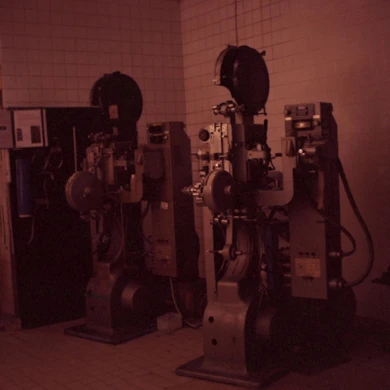
Long Live L’Abo! Celluloid and Activism
4, 5, 6 DIC 2025
L’Abominable is a collective film laboratory founded in La Courneuve (Paris, France) in 1996. It came into being in response to the disappearing infrastructures in artisan film-making and to provide artists and film-makers with a self-managed space from which to produce, develop and screen films in analogue formats such as Super 8, 16mm and 35mm. Anchored in this premise, the community promotes aesthetic and political experimentation in analogue film opposite digital hegemony. Over the years, L’Abominable, better known as L’Abo, has accompanied different generations of film-makers, upholding an international movement of independent film practices.
This third segment is structured in three sessions: a lecture on L’Abo given by Pilar Monsell and Camilo Restrepo; a session of short films in 16mm produced in L’Abo; and the feature-length film Une isle, une nuit, made by the Les Pirates des Lentillères collective.
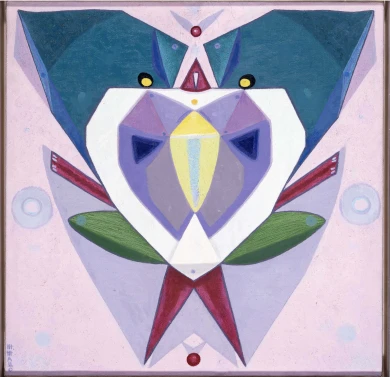
Estrella de Diego Lecture. Holding Your Brain While You Sleep
Wednesday, 3 December 2025 – 7pm
Framed inside the Museo Reina Sofía’s retrospective exhibition devoted to Maruja Mallo, this lecture delivered by Estrella de Diego draws attention to the impact of the artist’s return to Spain after her three-decade exile in Latin America.
Committed to values of progress and renewal in the Second Republic, Mallo was forced into exile to Argentina with the outbreak of the Civil War and would not go back to Spain to settle definitively until 1965 — a return that was, ultimately, a second exile.
Mallo saw out her prolific artistic trajectory with two impactful series: Moradores del vacío (Dwellers of the Void, 1968–1980) and Viajeros del éter (Ether Travelers, 1982), entering her most esoteric period in which she drew inspiration from her “levitational experiences” of crossing the Andes and sailing the Pacific. Her travels, both real and imaginary, became encounters with superhuman dimensions.
In parallel, her public persona gained traction as she became a popular figure and a key representative of the Generation of ‘27 — the other members of which also started returning to Spain.
This lecture is part of the Art and Exile series, which seeks to explore in greater depth one of the defining aspects of Maruja Mallo’s life and work: her experience of exile. An experience which for Mallo was twofold: the time she spent in the Americas and her complex return to Spain.
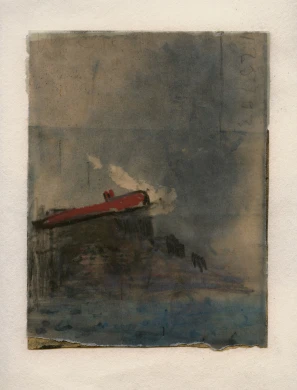
Juan Uslé. That Ship on the Mountain
Tuesday, 25 November 2025 – 7pm
Ángel Calvo Ulloa, curator of the exhibition Juan Uslé. That Ship on the Mountain, engages in conversation with artist Juan Uslé (Santander, 1954) in the Museo’s Auditorium 400 to explore in greater depth the exhibition discourse of this anthological show spanning four decades of Uslé’s artistic career.
The show casts light on the close relationship Uslé’s work bears to his life experiences, establishing connections between different stages and series which could ostensibly seem distant. Framed in this context, the conversation looks to explore the artist’s personal and professional journey: his memories, experiences of New York, his creative process, conception of painting, and ties with photography and film, and the cohesiveness and versatility that characterise his art. Key aspects for a more in-depth understanding of his artistic sphere.
The conversation, moreover, spotlights the preparatory research process that has given rise to this exhibition to grant a better understanding of the curatorial criteria and decisions that have guided its development.
These inaugural conversations, part of the main working strands of the Museo’s Public Programmes Area, aim to explore in greater depth the exhibition narratives of the shows organised by the Museo from the perspective of artists, curators and specialists.



![Miguel Brieva, ilustración de la novela infantil Manuela y los Cakirukos (Reservoir Books, 2022) [izquierda] y Cibeles no conduzcas, 2023 [derecha]. Cortesía del artista](https://recursos.museoreinasofia.es/styles/small_landscape/public/Actividades/ecologias_del_deseo_utopico.jpg.webp)
![Ángel Alonso, Charbon [Carbón], 1964. Museo Reina Sofía](https://recursos.museoreinasofia.es/styles/small_landscape/public/Actividades/perspectivas_ecoambientales.jpg.webp)